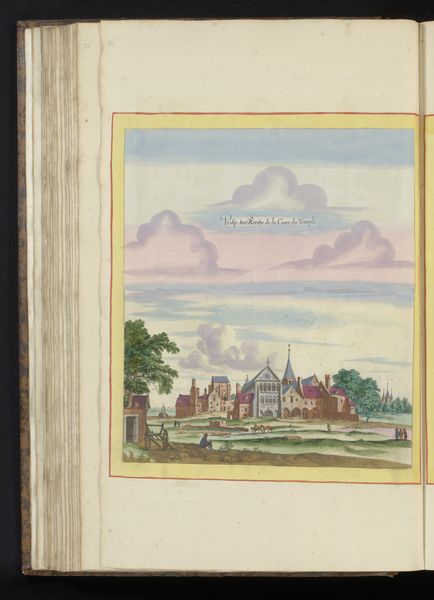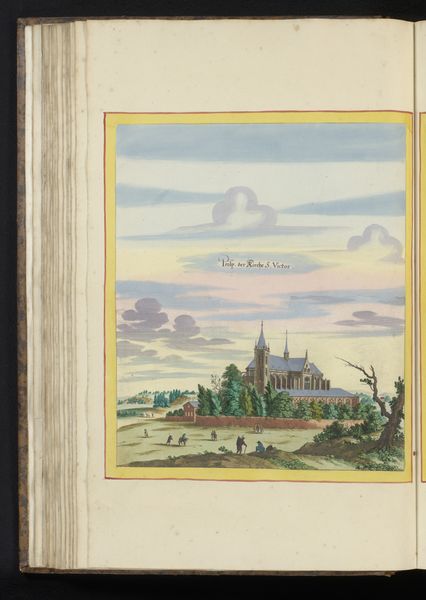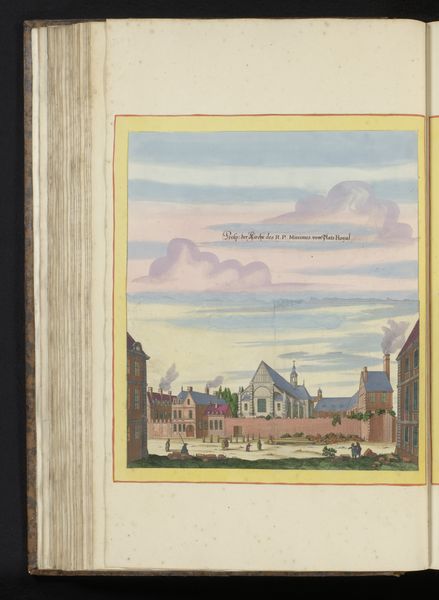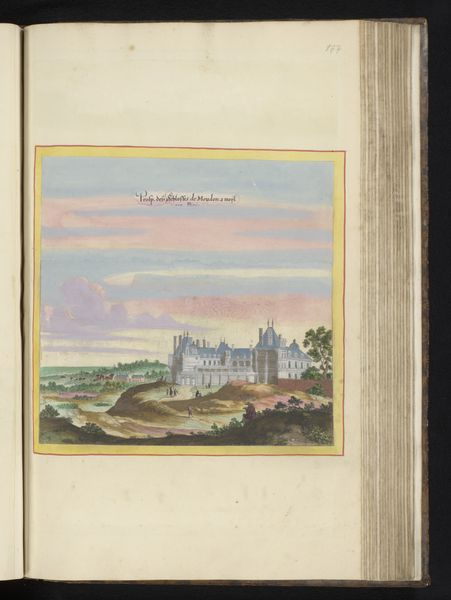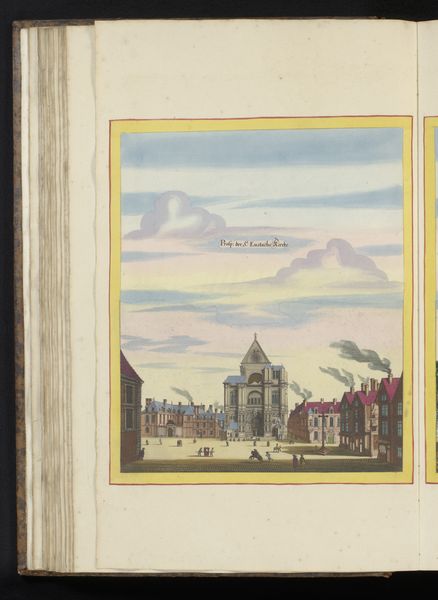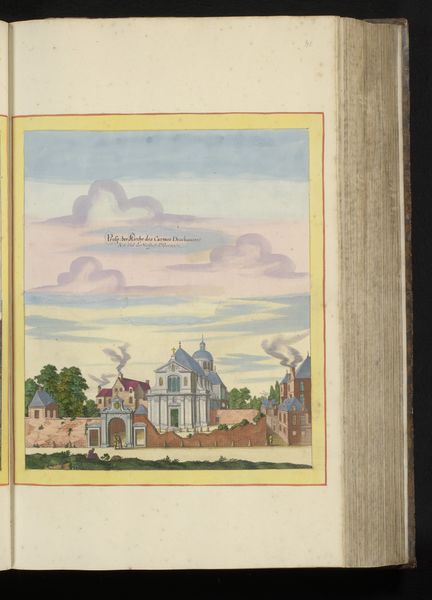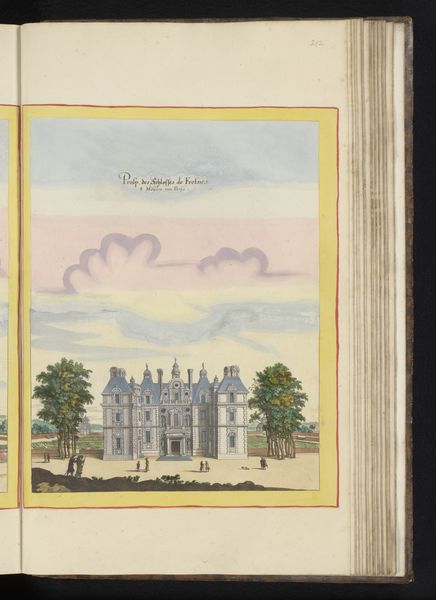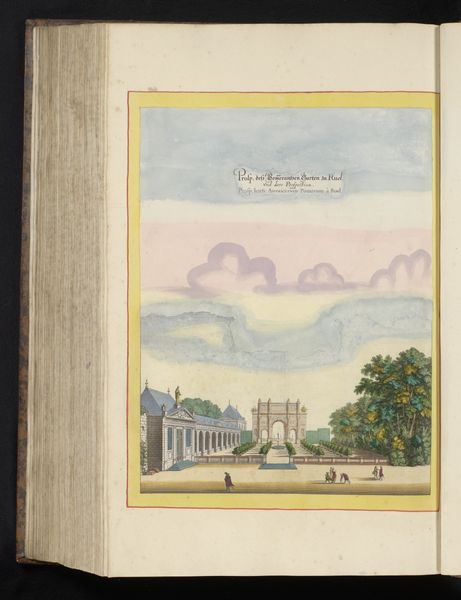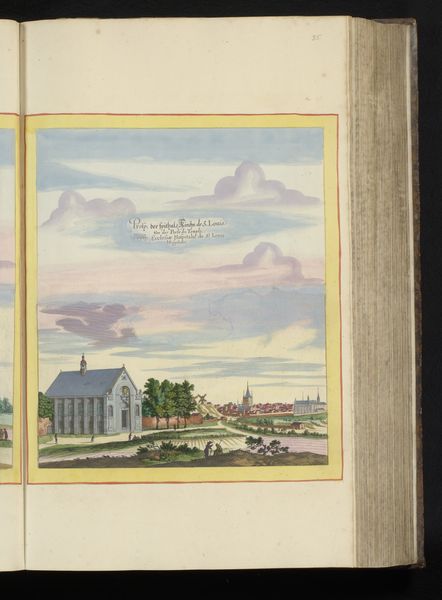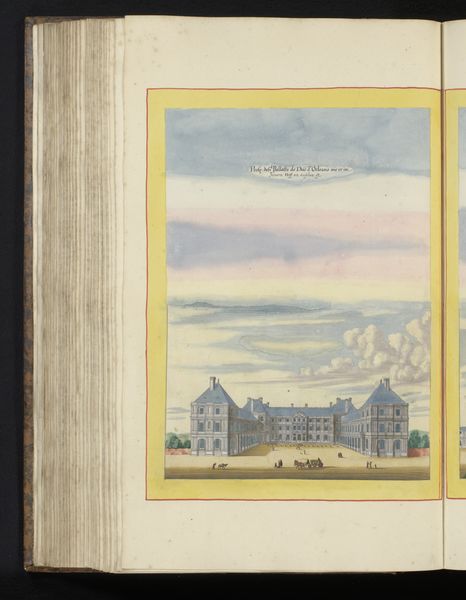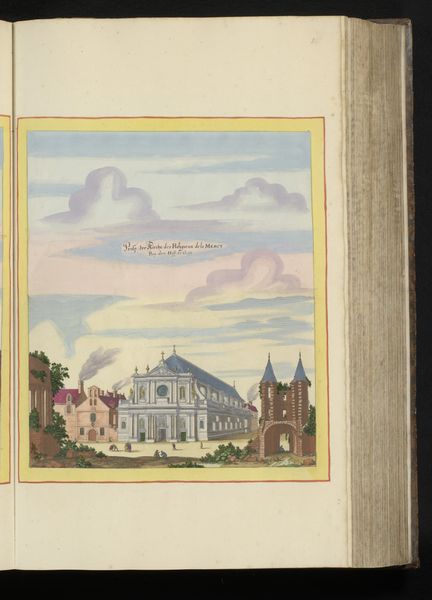
painting, paper, watercolor
#
baroque
#
painting
#
landscape
#
paper
#
watercolor
#
coloured pencil
Dimensions: height 380 mm, width 279 mm, height 536 mm, width 330 mm
Copyright: Rijks Museum: Open Domain
Curator: What strikes me immediately is the sheer, almost austere formality. The geometry is so meticulously laid out. Editor: Exactly. We’re looking at "View of Château de Villeroy from the Gardens," dating back to 1655, a work rendered in watercolor and coloured pencil on paper by Matthäus Merian the Younger, currently held at the Rijksmuseum. It captures more than just the building. It also shows its role within a specific social order. Curator: Indeed, and beyond its architectural representation, the rendering exudes the mood of Baroque aristocratic life, which of course, comes with inherent socio-political structures. This image is a document reflecting power, privilege, and perhaps, a certain aloofness from the populace. The château itself looks more like a constructed landscape, and the inhabitants seem quite incidental within it. It certainly asks us to reflect on social divides, and systems of inequity. Editor: Absolutely. Remember the era: landscape painting, especially featuring grand estates, served to legitimize authority. The Château wasn’t simply a residence; it was a symbol of influence, almost functioning as propaganda. The image promoted that very power to others. In whose service does such formal beauty stand? I wonder. It invites inquiry into these representations as constructions of class and dominance. Curator: Also, if we analyze who commissioned this work, and who might have viewed it, we have the possible recipients or stakeholders reinforcing certain ideals regarding class and status that permeate baroque era France. The composition also seems calculated in this regard. Note the sharp perspectival lines guiding the gaze, enforcing a predetermined, almost imposed sense of order. Editor: This wasn’t art for the masses; it visually reinforced existing power structures by celebrating this kind of architectural monumentality and those allowed into this exclusive landscape. Curator: Seeing how the clean watercolor and colored pencil evoke these complex questions about power dynamics underscores how artworks can reflect and influence perceptions. Editor: Absolutely. The way art visually promotes the architecture in question, tells an important historical and sociological story about this cultural period and specific political context.
Comments
No comments
Be the first to comment and join the conversation on the ultimate creative platform.
